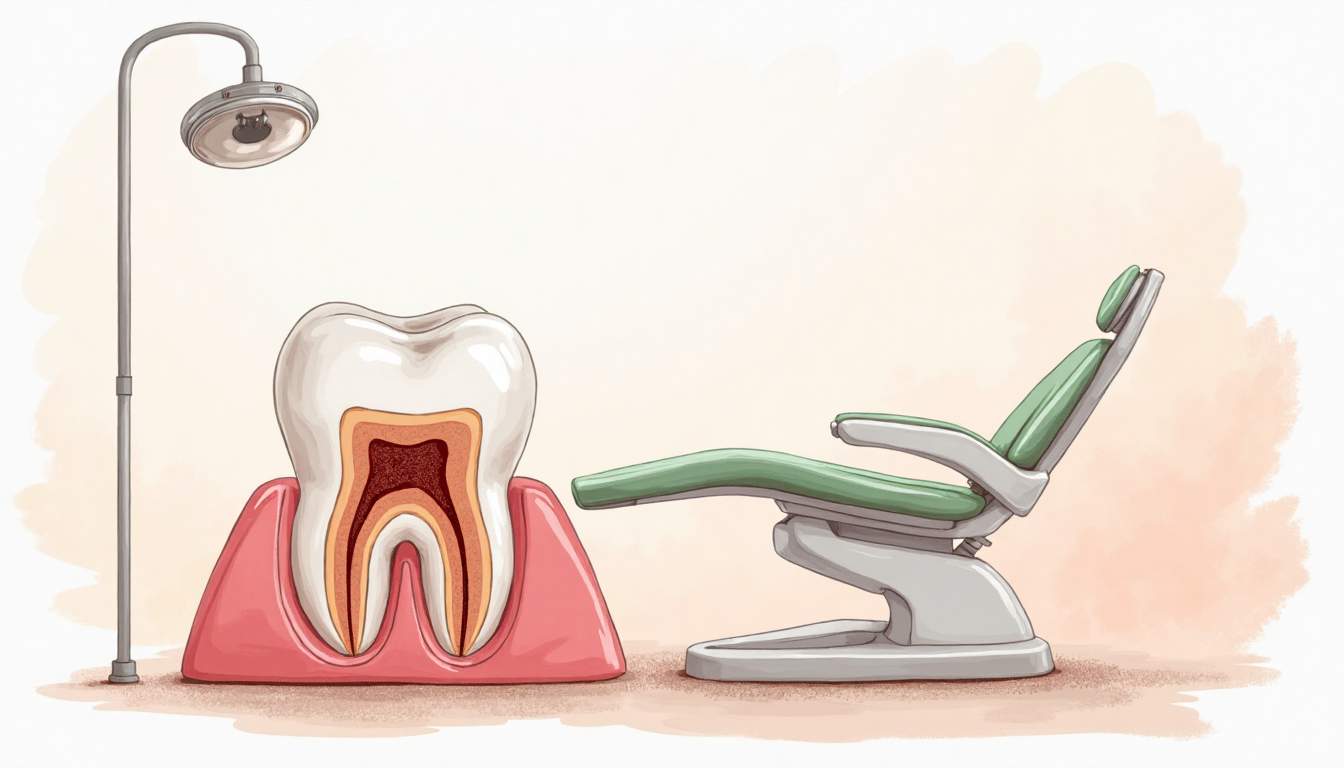
Root canal treatment often evokes feelings of anxiety and fear in many individuals. However, advancements in dental technology and techniques have transformed this once-dreaded procedure into a safe and effective solution for saving damaged teeth. This article explores the concept of pain-free root canal treatment, addressing common concerns and highlighting the benefits of modern dentistry.
Understanding Root Canal Treatment
Root canal treatment is a dental procedure designed to treat infection or damage within the pulp of a tooth. The pulp is the innermost part of the tooth, containing nerves and blood vessels. When this area becomes infected or inflamed due to decay, trauma, or other factors, a root canal may be necessary to save the tooth.

Many people associate root canals with pain, but this perception is often rooted in outdated techniques and misconceptions. Today's procedures focus on patient comfort and effectiveness, ensuring that the treatment is as painless as possible.
Why is a Root Canal Necessary?
There are several reasons why a root canal might be recommended. Common indicators include severe toothache, prolonged sensitivity to hot or cold, discoloration of the tooth, and swelling or tenderness in the surrounding gums. Ignoring these symptoms can lead to more severe complications, including tooth loss.
By addressing these issues promptly through a root canal, patients can avoid further pain and preserve their natural teeth. In many cases, a root canal can be completed in just one visit, making it a convenient option for those with busy schedules. Moreover, the success rate of root canal treatments is remarkably high, often exceeding 95%, which speaks to the effectiveness of modern dental techniques and materials used in the procedure. To learn more or schedule an appointment, visit the following link Kellyville dentist provides personalized dental care for all ages. We offer high-quality treatments to keep your family's smiles healthy and bright: https://kellyvilledentist.com.au/
What to Expect During the Procedure
Patients often wonder what to expect during a root canal. The procedure typically involves several steps, beginning with a thorough examination and X-rays to assess the extent of the damage. Once the dentist has a clear understanding, they will administer local anesthesia to ensure that the patient remains comfortable throughout the process.
After numbing the area, the dentist will create an opening in the tooth to access the pulp chamber. The infected or damaged pulp is then carefully removed, and the interior of the tooth is cleaned and shaped. Finally, the tooth is sealed with a filling material to prevent future infections. Following the procedure, patients may experience some mild discomfort, which can usually be managed with over-the-counter pain relievers. It's also important to maintain good oral hygiene and follow any post-treatment care instructions provided by the dentist to ensure a smooth recovery.
In addition to the immediate care required after a root canal, patients should also be aware of the importance of regular dental check-ups. These visits allow the dentist to monitor the health of the treated tooth and surrounding structures, ensuring that any potential issues are caught early. Furthermore, advancements in dental technology, such as 3D imaging and laser treatments, have made root canal procedures even more precise and efficient, minimizing recovery time and enhancing overall patient experience.
Modern Techniques for Pain-Free Treatment
Thanks to advancements in dental technology, root canal treatments can now be performed with minimal discomfort. Modern techniques focus on reducing pain and anxiety, making the experience more pleasant for patients.

Advanced Anesthetic Options
One of the key factors in achieving a pain-free root canal is the use of advanced anesthetic options. Dentists now employ a variety of anesthetics, including local anesthetics and sedation techniques, to ensure patients remain comfortable. Local anesthetics numb the specific area being treated, while sedation options can help patients relax during the procedure.
For those with dental anxiety, sedation dentistry can be particularly beneficial. Options range from nitrous oxide (laughing gas) to oral sedatives, allowing patients to choose the level of relaxation that suits them best. This approach not only alleviates pain but also reduces anxiety, making the entire experience more manageable.
Utilizing Technology for Precision
Modern dental technology has revolutionized the way root canals are performed. Tools such as digital X-rays and 3D imaging allow dentists to visualize the tooth's structure in great detail. This precision enables them to plan the procedure more effectively and minimizes the risk of complications.
Additionally, rotary endodontics, which utilizes specialized instruments that rotate at high speeds, can make the cleaning and shaping process quicker and more efficient. This technology reduces the time spent in the chair, further enhancing patient comfort.
Post-Procedure Care and Recovery
After a root canal, patients may experience some mild discomfort, but this is typically manageable with over-the-counter pain relief medications. Following the dentist's aftercare instructions is crucial for a smooth recovery.
Managing Discomfort
Most patients report that any discomfort following a root canal is significantly less than the pain they experienced before the procedure. Over-the-counter pain relievers such as ibuprofen or acetaminophen can help alleviate any lingering soreness. It's important to follow the dosage instructions provided by the dentist or pharmacist.
In some cases, the dentist may prescribe stronger pain medication if necessary. However, most patients find that their discomfort is minimal and resolves within a few days.
Maintaining Oral Hygiene
Maintaining good oral hygiene is essential for a successful recovery. Patients should continue to brush and floss their teeth regularly, being careful around the treated area. It's advisable to avoid hard or sticky foods for a few days to allow the tooth to heal properly.
Regular dental check-ups are also important for monitoring the health of the treated tooth and surrounding gums. These visits ensure that any potential issues are addressed promptly, helping to maintain overall oral health.
Benefits of Pain-Free Root Canal Treatment
The advantages of opting for a pain-free root canal treatment extend beyond just comfort. Patients can enjoy a range of benefits that contribute to their overall dental health and well-being.
Preservation of Natural Teeth
One of the most significant benefits of root canal treatment is the preservation of natural teeth. By saving a tooth that would otherwise need to be extracted, patients can maintain their natural smile and avoid the complications associated with tooth loss, such as shifting teeth and bite issues.
Preserving natural teeth also helps maintain jawbone health, as the roots of the teeth stimulate the bone, preventing deterioration. This is particularly important for long-term oral health and function.
Improved Quality of Life
Experiencing dental pain can significantly impact a person's quality of life. Root canal treatment alleviates this pain, allowing individuals to return to their daily activities without discomfort. Many patients report an immediate improvement in their overall well-being after the procedure.
Furthermore, with advancements in pain management and sedation, patients can undergo the treatment with minimal anxiety, making the experience much more positive. This shift in perception encourages individuals to seek necessary dental care rather than avoiding it due to fear.
Addressing Common Myths and Misconceptions
Despite the advancements in dental care, several myths and misconceptions about root canal treatment persist. Addressing these can help alleviate fears and encourage individuals to seek the treatment they need.
Myth: Root Canals Are Extremely Painful
One of the most common myths is that root canal treatments are painful. In reality, most patients report that the procedure is no more uncomfortable than having a filling placed. Thanks to modern anesthetics and techniques, pain is effectively managed throughout the process.
Many patients find that the relief from their pre-treatment pain far outweighs any discomfort experienced during or after the procedure.
Myth: Root Canals Cause Illness
Another misconception is that root canals can lead to systemic health issues. However, numerous studies have shown that root canal treatment is safe and does not contribute to illness. In fact, by removing infected tissue, root canals help prevent the spread of infection and protect overall health.
It's essential to consult with a qualified dental professional to address any concerns and receive accurate information about the procedure.
Choosing the Right Dental Professional
Finding a skilled and compassionate dentist is crucial for a positive root canal experience. Patients should look for a dental professional who specializes in endodontics, as they have advanced training in performing root canal treatments.
Research and Recommendations
When searching for a dentist, consider asking for recommendations from friends, family, or healthcare providers. Online reviews and testimonials can also provide insight into the experiences of other patients.
Once a potential dentist is identified, scheduling a consultation can help assess their approach to patient care and comfort. It's essential to feel comfortable and confident in the chosen dental professional.
Questions to Ask Your Dentist
During the consultation, patients should feel free to ask questions about the procedure, pain management options, and what to expect during recovery. Understanding the process can help alleviate anxiety and empower patients to make informed decisions about their dental care.
Additionally, discussing any concerns about dental anxiety or previous negative experiences can help the dentist tailor their approach to meet the patient's needs.
Conclusion
Pain-free root canal treatment is a safe and effective option for individuals facing dental issues related to tooth decay or infection. With advancements in technology, anesthesia, and patient care, the procedure has transformed into a manageable experience that prioritizes comfort.

By addressing common misconceptions and understanding the benefits of root canal treatment, patients can approach their dental care with confidence. The preservation of natural teeth not only enhances oral health but also improves overall quality of life.
Choosing the right dental professional is essential for a positive experience, and patients should feel empowered to seek the care they need without fear. With the right support and information, a pain-free root canal can lead to a healthier, happier smile.





